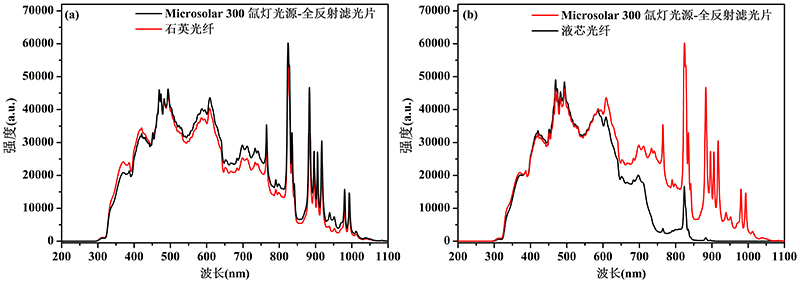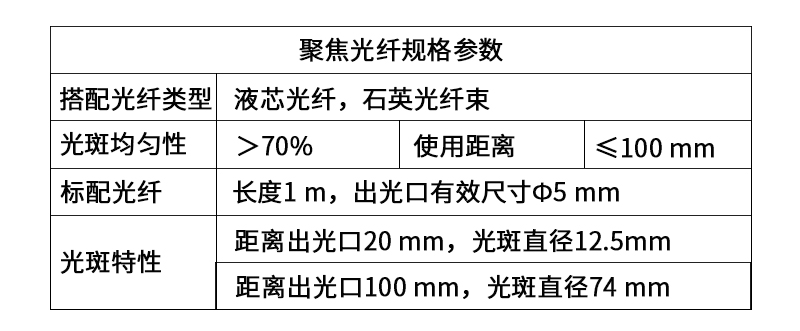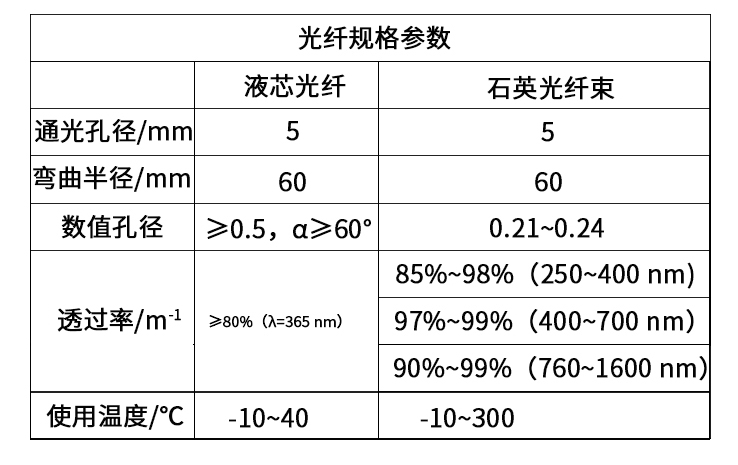In some specific photochemical experiments, due to the shape of the reactor and laboratory space constraints, it is not convenient to place the light source in close proximity to the reactor. Therefore, it is necessary to redirect the light emitted by the light source into the reactor using optical fibers. The most commonly used optical fibers for this purpose are quartz fibers and liquid-core fibers.
Liquid-core fibers use liquid material as the core, with a polymer material serving as the cladding layer. They are characterized by their large core diameter, wide spectral transmission range, and high light transmission efficiency.
Quartz fibers have a quartz material core, often in the form of a bundle of quartz fibers, made up of individual fibers with a diameter of Φ0.2 mm.

Xenon lamp light source with (a) quartz fiber and (b) liquid-core fiber, before and after spectral comparison.

By converging the light emitted by the xenon lamp light source through optical elements and transmitting it through the optical fiber, the power density of the light at the output aperture is higher compared to regular optical fibers.
